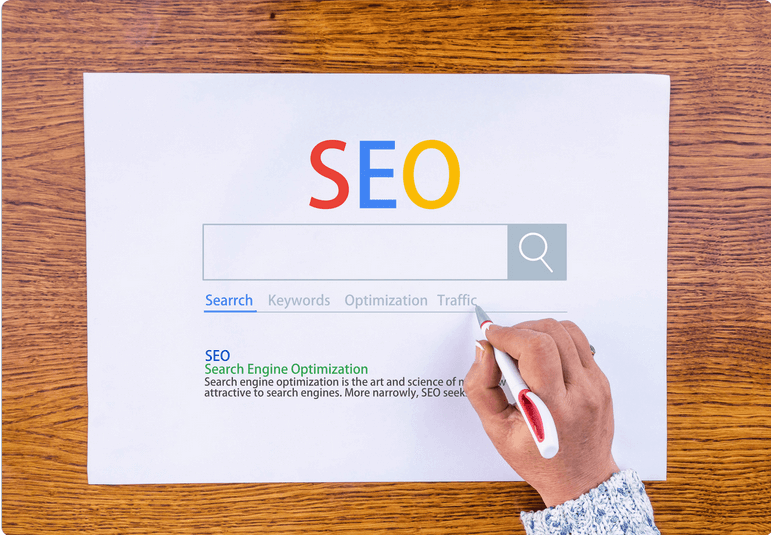The Power of H1 H2 H3 SEO
Introduction
Headers are the backbone of your content’s structure, providing a roadmap for search engines and users. By effectively leveraging H1, H2 H3 SEO tags, you can optimize your content for SEO and skyrocket your website rankings.
H1 Tags: The Cornerstone of Your Content
Why H1 Tags are Essential
H1 tags signify the primary topic of your webpage, acting as a cornerstone to build the rest of your content around. Search engines rely on H1 tags to understand the page’s main subject, making them indispensable for SEO.
Best Practices for H1 Tags
- Single Usage: Limit H1 tags to one per page, ensuring search engines and users can quickly identify your content’s primary focus.
- Keyword Optimization: Include your primary keyword within the H1 tag to improve relevancy and visibility.
- Clarity and Brevity: Keep your H1 tags concise and informative, capturing the essence of your content.
H2 Tags: The Building Blocks of Your Content’s Hierarchy
The Significance of H2 Tags
H2 tags serve as subheadings, dividing your content into digestible sections and creating a coherent structure. By incorporating H2 tags, you can enhance user experience and provide search engines with a clearer understanding of your content’s organization.
Expert Tips for H2 Tags
- Purposeful Organization: Utilize H2 tags to break up your content logically, making it easier for readers to follow and absorb.
- Keyword Integration: Include relevant keywords in H2 tags to reinforce your content’s SEO value.
- Consistent Formatting: Ensure uniformity in your H2 tags’ styling, establishing a professional appearance and facilitating readability.
H3 Tags: Fine-Tuning Your Content’s Structure
The Role of H3 Tags
H3 tags operate as sub-subheadings, further refining your content’s structure and offering additional guidance to users and search engines. With H3 tags, you can delve deeper into subtopics, providing comprehensive information and boosting your SEO potential.
H3 Tag Best Practices
- Strategic Implementation: Use H3 tags to dissect complex subjects, offering detailed explanations without overwhelming readers.
- Keyword Inclusion: Integrate secondary keywords into H3 tags to maximize SEO impact and improve content relevancy.
- Readability Focus: Adopt a reader-friendly approach using H3 tags to present information in a digestible format.
The Synergy of H1, H2, H3 Tags for SEO
How Header Tags Work Together
H1, H2, and H3 tags are interconnected, working to create a cohesive content structure. By employing these tags strategically, you can enhance your content’s readability, user experience, and SEO performance.
The Benefits of a Well-Structured Content
- Improved User Experience: A well-structured content facilitates navigation and comprehension, increasing user engagement and reducing bounce rates.
- Higher Search Engine Rankings: By providing a clear hierarchy, header tags enable search engines to understand your content better, boosting your SEO and search rankings.
- Better Content Indexation: Header tags aid in content indexation, ensuring search engines can quickly and accurately index your content for relevant search queries.
Crafting Compelling Header Tags: Tips and Tricks
- Intriguing Titles: Craft captivating H1 tags that pique user interest, driving clicks and engagement.
- Concise and Descriptive: Keep your header tags brief yet informative, balancing capturing attention and conveying meaning. 3. Power Words: Incorporate power words into your header tags to evoke emotion and provoke action from your readers.
- Numbers and Lists: Utilize numbers and lists in your headers to create structure and organization, making your content more approachable.
- Question-Based Headers: Pose questions in your header tags to encourage curiosity and stimulate reader engagement.
Header Tags: Common Mistakes to Avoid
- Over-Optimization: Refrain from excessive keyword stuffing, which can harm readability and trigger search engine penalties.
- Inconsistent Formatting: Maintain a consistent style and format for your header tags, ensuring a polished appearance and easy navigation.
- Ambiguous Headers: Avoid vague or misleading header tags that confuse readers and dilute your content’s SEO value.
- Excessive Length: Keep your header tags concise and to the point, preventing them from overwhelming your content or detracting from its core message.
Testing and Optimizing Header Tags
Testing and optimizing your header tags is vital to maximizing their SEO potential. You can make informed decisions to fine-tune your header tags for optimal results by analyzing user engagement metrics and search engine performance.
Tools for Header Tag Analysis
- Google Analytics: Utilize Google Analytics to monitor user behavior and assess the effectiveness of your header tags in driving engagement.
- Google Search Console: Leverage Google Search Console to identify potential issues with your header tags and evaluate their impact on search rankings.
- A/B Testing Tools: Implement A/B testing tools, such as Optimizely or VWO, to compare header tag variations and determine the most effective approach.
Conclusion:
Mastering the art of H1, H2, and H3 tags is pivotal to your SEO success. By employing these tags strategically, you can create well-structured, user-friendly content that search engines love. Remember to optimize your header tags with relevant keywords, maintain a consistent format, and avoid common pitfalls to ensure your content climbs the search engine ranks and leaves the competition in the dust.
FAQs
Does H2 or H3 matter for SEO?
Yes, both H2 and H3 tags play a significant role in SEO. They contribute to the overall structure and organization of your content, enhancing user experience and making it easier for search engines to understand the context of your content.
Importance of H2 Tags for SEO
H2 tags serve as subheadings that divide your content into relevant sections. By incorporating H2 tags, you can improve the readability of your content, making it more appealing to users and search engines. Additionally, H2 tags provide an opportunity to integrate relevant keywords, which can reinforce the SEO value of your content.
Importance of H3 Tags for SEO
H3 tags are sub-subheadings that further refine the structure of your content. They allow you to delve deeper into subtopics, offering detailed explanations and additional context. H3 tags can help make your content more comprehensive and informative, leading to higher user engagement and better search rankings. Including secondary keywords in your H3 tags can also improve content relevancy and SEO performance.
Both H2 and H3 tags are essential for SEO as they contribute to the structure and organization of your content, improve readability, and provide opportunities to include relevant keywords. Using H2 and H3 tags strategically can enhance user experience, make your content more accessible to search engines, and boost your rankings.
Does H1 H2 affect SEO?
Yes, H1 and H2 tags significantly affect SEO. They play a crucial role in defining the structure and hierarchy of your content, which impacts both user experience and search engine understanding. Properly optimizing H1 and H2 tags can lead to improved search rankings and higher visibility for your content.
Importance of H1 Tags for SEO
H1 tags are considered the most crucial heading tags for SEO, as they represent the primary topic of your webpage. Search engines, like Google, use H1 tags to determine the main subject of your content, which influences your page’s relevancy for specific search queries. Incorporating your primary keyword into the H1 tag can enhance your content’s visibility and improve search rankings.
Importance of H2 Tags for SEO
H2 tags act as subheadings, dividing your content into organized sections. They play a vital role in enhancing the readability of your content, making it more appealing to users and search engines. Moreover, H2 tags provide opportunities to include related keywords, boosting your content’s SEO value.
Using H2 tags strategically, you can create a clear content hierarchy that enables search engines better to understand your content and index it more accurately. This can lead to improved search rankings and greater visibility for your content.
H1 and H2 tags are essential for SEO as they contribute to your content’s structure, hierarchy, and organization and provide keyword optimization opportunities. By effectively utilizing H1 and H2 tags, you can enhance user experience, improve search engine understanding, and boost your search rankings.





